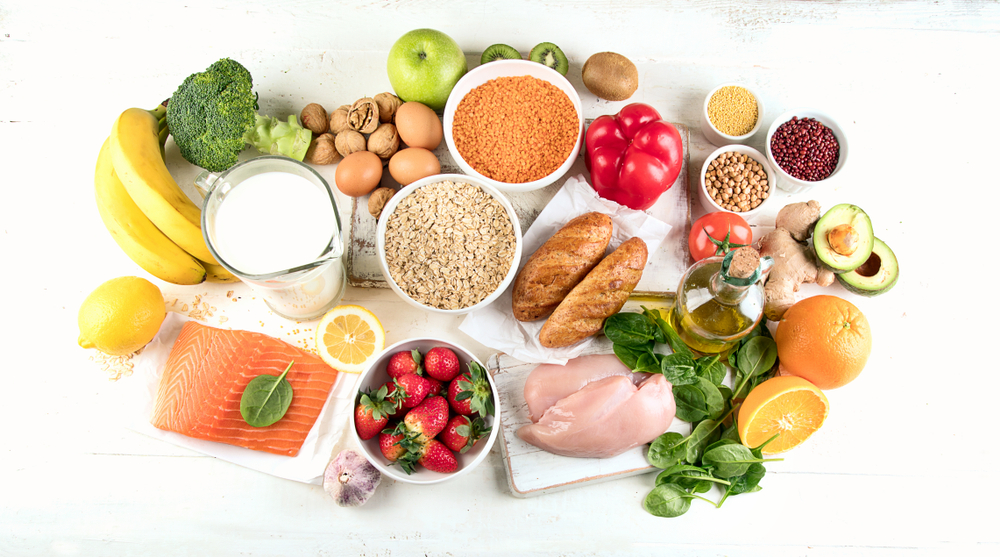When you’re traveling with friends and family, there are usually two things that you will encounter when you’re out there when it comes to food: a ton of foreign and delicious foodstuff and not enough self-service kitchens to allow you to prepare a meal in, instead of dining out. Why the latter? After all, it’s not something you’d be worried about when there’s the former, right?

Unfortunately, this lack of access to balanced meals can become a problem when it’s day three on the trip and everyone wants to nibble on French baguettes for breakfast, lunch, and that conspicuous time between lunch and dinner. After all, there’s so much exotic food out there, but there’s not enough healthy food to satisfy your needs. Your guts will want nutrients, and they want a huge variety of them.
Remember, It’s All About Variety
How can you tell if your diet is balanced when traveling? You’ll know you’re not eating right when you just eat one kind of food on a trip. Maybe you fell in love with Turkish cag kebabs and wouldn’t want to eat anything else that’s not kebab-ed. That’s fine, too. But by the time it’s day four and you’re still on the road to the next part of civilization, your stomach will probably get bored. It’ll eventually want something else that’s not a kebab.
So finally, you decide to eat something else. Basically, you’re ready for just about anything — just as long as it’s something new and novel. Or better yet, you follow the Healthy Eating Plate, even while traveling abroad. This guide tells you how much you should eat of a certain food in a meal so you can get plenty of nutrition. How does this plate work? Think of it like this. Imagine straining every single piece of food on your plate and dividing them into three:
- Fruits and vegetables
- Grains and carbohydrates
- Proteins-rich foods
Sounds familiar? They’re the glow, go, and grow foods you got drilled on in elementary school! Now if you put them on your plate, about half of them should be fruits and veggies. Carbohydrates and proteins should be both a fourth of the plate each. Now, it’s not actually a hard rule. You can eat a little more of anything and a little less of others, and the occasional treat here and there won’t hurt you.
But that said, you do need to have these three to get a proper meal, even if it’s from a curious-looking (albeit delicious) stew you’ve come to love in some faraway country. It’s stuff like this that you should never forget to do, even while on a fun trip. Just because you’re away from home doesn’t mean you can skimp on eating right. Staying healthy makes it so you get to enjoy your trip all the more.
Prepare to Taste Food You Don’t Love
It’s not all the time that foreign food will massage your palate. Sometimes, they just taste a bit… off. Maybe they have been cooked in a way that you don’t like. Perhaps you don’t like the spices used in the recipe. And you know what? That’s absolutely okay! There’s some kind of food for everyone, but not everyone likes the same food.
There’s just one problem, though. What if you can’t follow the recommended healthy eating guidelines because of this? While skipping meals might be doable, it’s not something that experts would recommend. After all, you still have to eat, and keep eating at least something to keep your energy up. If it’s a leisure trip, then you’ll probably leave to go look for something better. It’s not a big deal.
But what if you’re on a business trip, or if you’re on a long-term volunteering mission, and you’re looking at months of less-than-nourishing fare? In this case, it might be best to ease yourself into it. Take it slow. If you’re worried, consider bringing along some supplements. Maybe some multivitamins or personalized vitamins to help you meet your nutritional needs. By planning ahead, you’ll be able to have something to keep you energized and healthy.
Always Be Prepared with Antihistamines
Eating healthy is certainly one thing to keep in mind, but you should also be on the lookout for the stuff that you’re not supposed to eat, too. After all, severe allergies make for a bad experience, and can even be life-threatening. And even if you have decided to go to a tourist spot that might not have the stuff you are allergic to, there’s a chance that even those have small traces of the stuff.
It’s best if you are always prepared and bring yourself some antihistamines or — in the event of a more serious allergy, your epi-pen — during a tour. You can also tell whoever you are buying food from that you’re allergic to certain foods, just as long as you say it both firmly and also in a reasonably polite way. Most places that serve tourists and travelers are quite likely to help you choose an order, and many might even offer to alter the dish for you.
However, the most important thing you need to keep in mind during your trip is that you need to have fun. That’s for all trips you go on, for work or leisure, or even if you’re traveling for volunteerism instead of just good old-fashioned regular tourism. After all, these are going to become good memories that you look back on in the future. Make it count, try to eat right, and you’ll be sure to have a wholly rewarding experience while there!
